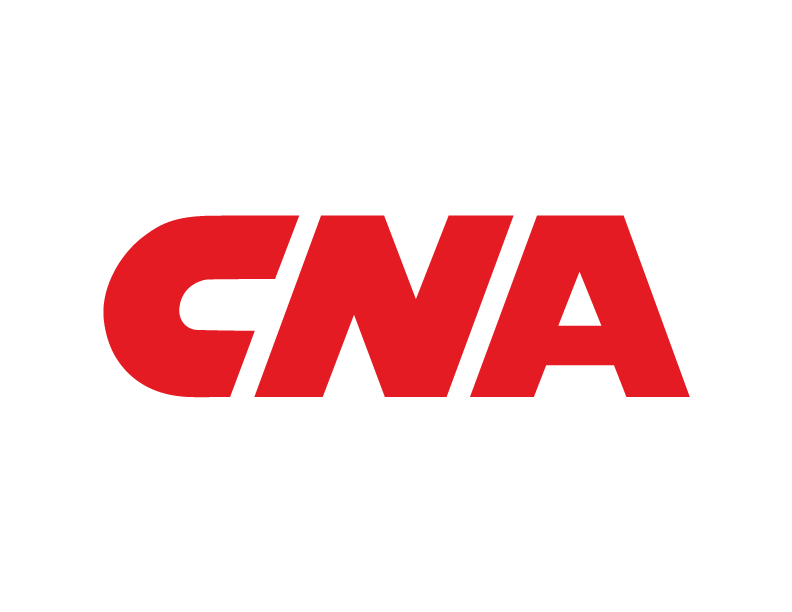Cargo Coverage Solutions for Stock Risks and the Role of IoT and AI
We all know the insurance market is cyclical. Right now, a hard market is causing policyholders and their brokers to search for alternative solutions to offset increased premiums and restrictive terms. The ocean marine line of business impacted by the hard P&C market, with an increase in stock moving into policyholders’ cargo programs. Now may be the best time to do this, if to take advantage of the technology available to the shipping and logistics industry.
Traditional ocean marine cargo insurance provides protection against physical loss or damage to goods in transit; and while goods are temporarily in storage during the normal course of transit. A less traditional, but not uncommon, extension is to insure goods before transit has commenced or after the voyage has concluded, referred to as a warehouse extension. While this coverage is available by extension to a cargo policy, it is most typically provided by a property policy.
The recent P&C reinsurance renewals have seen significant increases to primary insurers’ costs, with some insurers experiencing increases from 25% to 70%[1]. In addition, many primary insurers’ retention amounts increased.[2] Increases were multifaceted, with catastrophe perils being the primary driver and resulting in the most significant rate increase and change in terms.[3] Secondary perils such as wildfires, convective storms, floods and hail also impacted the reinsurance market on January 1.[4] The way forward looks equally challenging, with some in the Canadian market speculating that reinsurance rates will hold firm due to “[e]conomic impacts such as inflation, geopolitical tensions, and exceeding damage from NatCats [natural catastrophes] all factor[ing] into the future of reinsurance renewals”[5].
With the expectation for conditions to continue, policyholders and their brokers are seeking ways to find premium relief. One strategy to drive premium savings is to move the stock exposure from the property program into an ocean marine policy. This could include stock held at the policyholder’s locations, stored at third-party warehouses or at distribution centres awaiting final delivery. A typical cargo policy comes off risk when the goods are received at the warehouse. Coverage can be provided by scheduling the locations on the cargo policy using a warehouse endorsement.
Another solution, most typically involving manufacturing risks, is to cover the policyholder’s product in its various stages within a type of ocean marine cargo product called a cargo with storage policy. This can include the incoming raw materials as they are transformed into a final product (excluding losses as a result of the process), and then as they are shipped as partially completed items to another manufacturing location, or as final products to buyers.
The challenge is the risk analysis and monitoring of these goods while they undertake their insured cargo voyage, either in transit or in storage. However, this can be addressed as more industries incorporate the Internet of Things (IoT) into their operations and logistic management chains and leverage artificial intelligence (AI).
How can the IoT and AI help?
The IoT is “a system of interconnected devices and sensors that can collect and exchange data”[6]. These smart devices can be made part of standard shipping containers, inserted within a cargo’s packaging or incorporated directly into the goods being shipped. The captured data can include the physical location using GPS sensors, environmental conditions such as ambient temperature and humidity, movement metrics such as sudden accelerations or stops, and quantity metrics such as the number of units in a particular package.
In 2021, there were 13.8 billion IoT units, and that number is expected to double by 2025[7]. In 2022, the maritime industry was forecast to spend $931 million USD on artificial intelligence solutions. That figure is expected to more than double in the next five years to $2.7 billion USD by 2027, a compound annual growth rate of 23%.[8] The digitisation of the logistics supply chain and incorporation of AI provide an opportunity for all participants to leverage the data associated with the process.
This investment in AI is expected to translate into:
- An increase in smart warehouses. As a result of advances in technology, and particularly the increase in demand for consumer products during the pandemic, large distribution centres like those of Alibaba and Amazon have led the way in the development of smart warehouses. AI and autonomous robots are used to collate made-to-order deliveries for consumers, reducing the need for large inventory, helping the quantification of future losses and reducing the risk of large accumulations for insurers and risk managers alike.[9]
- The development of warehousing on demand, similar to Airbnb. The inclusion of commercial warehousing in the sharing economy would enable the use of a large number of rented warehouses and also allow for a decrease in inventory value accumulations resulting in a decrease in expenses for policyholders.[10]
- The use of smart containers in the supply chain. Risk managers can use available data to locate their cargo at any given moment, from the time they are prepared for transport in smart warehouses through the different conveyances to final destination, employing GPS sensor technology akin to suitcase airtags.[11] Smart containers allow for adaptive temperature control during the voyage, better protecting against temperature fluctuation damage, and enable port operators to automatically scan and separate damaged shipment containers.[12]
- The use of autonomous container trucks. Since 2021, large container ports worldwide have deployed autonomous container trucks capable of transporting containers between ships, container yards and distribution centres. China has already introduced autonomous container trucks in 13 of its ports[13], providing risk managers with up-to-date information on where exactly in the logistics chain their containers are located, enabling them to better estimate departure and arrival times and track misdelivered or delayed transports.
- The use of AI-automated machinery at ports; For loading and unloading of containers onto vessels and trucks to ensure that the containers are loaded correctly and efficiently, to maximize space and reduce voyage times.
- The use of AI in vessels (fleets). This optimizes fleet operations and improves the efficiency of shipping routes by analyzing real-time data from GPS, weather and traffic to reduce shipping costs and delays due to vessel equipment breakdown[14], or external factors like weather and traffic incidents such as the Suez Canal incident of 2021, where many vessels had to reroute last minute, causing unexpected delays and increased freight costs.[15]
- Better vessel operations from AI-equipped ports. Monitor smart containers to ensure they are efficiently and correctly loaded onto trucks and vessels to reduce human error that results in a reduction of voyage claim exposures.
- Predictive modelling through the use of AI. Allows logistics managers to predict potential hazards or threats related to weather or traffic to identify shorter and cheaper routes for more accurate timetables.
- Supply chain management. AI can be used to optimize the entire shipping process, from order management to logistics and inventory management.
As a result, both risk managers and insurers will be able to monitor accumulation of risks at ports, on vessels or in warehouses, ensuring more accurate exposure limits to reflect on cargo and cargo with storage policies.
This includes the documentation process. Finland’s Wärtsilä, a leader in smart technologies and complete lifecycle solutions for the marine and energy markets, established a secure, smart, cloud-based digital connection for applications across the entire supply chain, facilitating potential claim events.[16] Automatic alerts through IoT-enabled containers and vessels can alert ship operators and relevant authorities in case of an emergency, allowing quick responses, potentially reducing the severity of a loss.[17] In autonomous container trucks, detection of an unexpected movement, such as a sudden acceleration or abrupt stop, could indicate an incident that may result in a claim.
The 2021 incident in which the Ever Given ship blocked the Suez Canal has shown how critical these forecasting models are. With the most frequented maritime transport route entirely blocked, the shipping companies had to improvise, searching for the shortest and most time-effective alternatives.[18] AI technology could provide more accurate alternatives in real time.[19]
The Hanjin Shipping bankruptcy[20] and the Zim Kingston incident are recent examples of where predictive modelling, smart containers and smart vessels could play an important role to reduce potential weather related losses by providing real-time solutions and alternatives.
AI solutions also minimize a vessel fleet’s carbon footprint; with route forecasting involving fuel consumption factors lowering emissions and helping carriers reduce their pollution impact.
Insurers and brokers can utilize IoT data to analyse, identify and mitigate risk, ensuring their bottom lines. With the adoption of IoT and AI in the logistics industry and the P&C market’s hardening, there may never be a better time to transfer stock risks to an ocean marine cargo product.
[1] "What’s driving Canadian insurers’ reinsurance rates?", Alyssa DiSabatino, www.canadianunderwriter.ca/catastrophes/whats-driving-canadian-insurers-reinsurance-rates-1004232507/ (accessed April 17, 2023)
[2] Reinsurance Market Dynamics: January 1, 2023. Aon, page 16.
[3] Ibid, page 15.
[4] Ibid, page 17
[5] "What we can expect from future reinsurance renewals," Alyssa DiSabatino, www.canadianunderwriter.ca/insurance/what-we-can-expect-from-future-reinsurance-renewals-1004232597/ (accessed April 17, 2023).
[6] “How IOT is Revolutionizing the Shipping Industry,” IoT: 6 Perfect Use Cases That Change the Shipping Industry (dfreight.org) (accessed April 26, 2023)
[7] “The Role of IoT in the Shipping Industry,” The Role of IoT in the Shipping Industry | Shipware™ (accessed April 26, 2023)
[8] “Artificial Intelligence in Maritime - a learning curve,” Lloyds Register, https://tec.ieee.org/newsletter/december-2021/artificial-intelligence-for-maritime-transport
[9] “Five predictions on the future of smart warehousing,” Internet of business https://internetofbusiness.com/five-predictions-future-smart-warehousing/
[10] ibid
[11] ibid
[12] “AI in Maritime Industry: How Artificial Intelligence Solutions Benefit the Shipping Sector,” Dorota Owczarek, Nexocode, https://nexocode.com/blog/posts/ai-in-maritime-artificial-intelligence-solutions-in-the-shipping-sector/
[13] “Port Automated Driving Report, 2021,” Report Linker, ReportLinker’s Port Automated driving report 2021
[14] “A brief introduction to AI and its applications in the maritime industry,” Safety 4 Sea, Themistoklis Sardis, https://safety4sea.com/cm-a-brief-introduction-to-ai-and-its-applications-in-the-maritime-industry/
[15] “How the Suez Canal blockage may impact reinsurance rates,” Adam Malik. https://www.canadianunderwriter.ca/insurance/how-the-suez-canal-blockage-may-impact-reinsurance-rates-1004205822/
[16] “How AI is Influencing the Shipping Industry Today,” Advanced Polymer Coatings, https://www.adv-polymer.com/blog/artificial-intelligence-in-shipping
[17] “A brief introduction to AI and its applications in the maritime industry,” Safety 4 Sea, Themistoklis Sardis, https://safety4sea.com/cm-a-brief-introduction-to-ai-and-its-applications-in-the-maritime-industry/
[18]“How the Suez Canal blockage may impact reinsurance rates,” Adam Malik. https://www.canadianunderwriter.ca/insurance/how-the-suez-canal-blockage-may-impact-reinsurance-rates-1004205822/
[19] “How AI is Influencing the Shipping Industry Today,” Advanced Polymer Coatings, https://www.adv-polymer.com/blog/artificial-intelligence-in-shipping
[20] “Hanjin Shipping Bankruptcy” Port Economics, Management and Policy, The Hanjin Shipping Bankruptcy | Port Economics, Management and Policy (porteconomicsmanagement.org)
In Canada, products and/or services described are provided by Continental Casualty Company, a CNA property/casualty insurance company. The information is intended to present a general overview for illustrative purposes only. Read CNA’s General Disclaimer.

